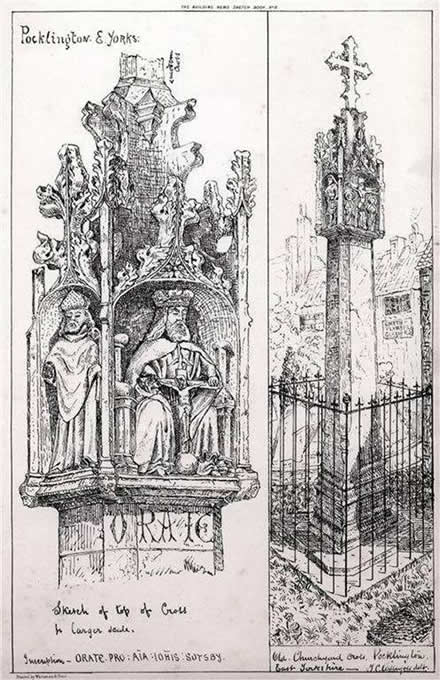There is no doubt that the area around Pocklington had many ancient landscapes and was a favoured place for human activity for thousands of years. The fertile and largely well-drained soils, water courses of the Pocklington beck and the proximity of the Wolds have contributed to the site being a probably settled from early times. Evidence of Neolithic people living in the area is abundantly found in the area. Bronze Age burial mounds and Bronze and Iron age earthworks are to be found in the vicinity.
A large Iron Age cemetery has recently been found in Burnby Lane on the site of the new David Wilson homes housing estate. So far over 170 burials have been found with 86 square barrows. Weapons were found in the graves as well as fine brooches and brightly coloured beads.

Roman settlements have been excavated at nearby Millington, Londesborough, Shiptonthorpe and a Roman Fort has been recently found at Hayton on the main Roman Road heading from Brough to York now known as the A1079.
David Neave in his History of Pocklington says that the origin of the name derives from an Anglian settlement called ‘Pocela’s farm’.
The site of the church was known to have been a religious centre with the visit of St. Paulinus in 627 this is recorded on a treasured possession of the church; the famous Sotheby Cross. The cross was discovered buried in the churchyard in 1835, probably buried there for safety during the Civil War. The inscription on the base reads (translated) “Paulinus here preached and celebrated (the Mass) A.D. 627” Christianity had been little known in the district previously although Constantine who became the first christian Roman emperor of the Roman Empire was proclaimed in York in 306 A.D. and his mother Saint Helena’s name is recorded in a number of places around Pocklington.

(Srce: The Building News Sketchbook – 1871)
|

